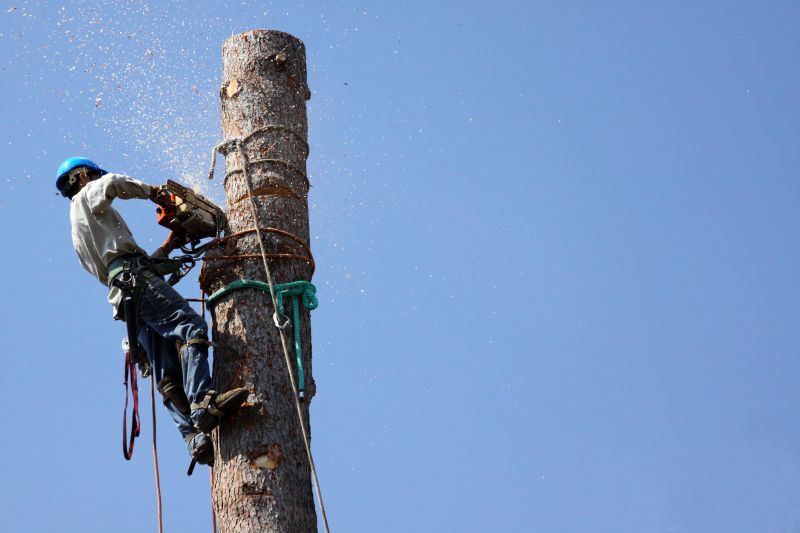Popular Tree Removal Products For Safe and Effective Work
Discover the most recommended tools and gear that help you perform tree removal tasks with confidence and precision.
 Tree removal is a task that often requires specialized equipment to ensure safety and efficiency. Whether dealing with dead, diseased, or hazardous trees, having the right tools can make the process smoother and safer. From manual hand tools to powerful machinery, there are various options suited for different scales of tree removal projects. Proper planning and the correct equipment are essential to prevent accidents and damage to surrounding property.
Tree removal is a task that often requires specialized equipment to ensure safety and efficiency. Whether dealing with dead, diseased, or hazardous trees, having the right tools can make the process smoother and safer. From manual hand tools to powerful machinery, there are various options suited for different scales of tree removal projects. Proper planning and the correct equipment are essential to prevent accidents and damage to surrounding property.
Top Overall Option
Multi-Function Tree Removal Kit
A comprehensive tree removal kit that includes a versatile chainsaw, extendable pole saw, safety gear, and accessories. Designed for both DIY enthusiasts and professionals, it offers a balanced combination of power, reach, and safety features to handle various tree removal tasks efficiently.
Types of Products For Tree Removals
Chainsaws
Powerful cutting tools essential for felling and trimming trees, available in gas, electric, and battery-powered models.
Pole Saws
Extendable saws that allow reaching high branches safely from the ground, ideal for pruning and small removals.
Pruning Saws and Loppers
Hand tools designed for detailed trimming and branch removal, suitable for smaller tasks.
Stump Grinders
Machines used to grind down tree stumps after felling, helping clear space for new growth or construction.
Ropes and Harnesses
Safety equipment for securing and controlling trees during cutting or removal.
Chippers
Machines that chip branches and small logs into mulch, aiding in debris management.
Lifting and Crane Equipment
Heavy machinery used for removing large or difficult trees safely.
Protective Gear
Helmets, gloves, eye protection, and chaps designed to keep operators safe during tree removal.
Aerial Lifts
Equipment like cherry pickers or bucket trucks used for high-reach tree work.
Log Splitters
Tools used to split felled logs into manageable pieces for disposal or use.
Tree Climbing Gear
Harnesses, spikes, and ropes for professional arborists performing high-altitude work.
Debris Bags and Tarps
Materials for collecting and transporting branches and logs efficiently.
Root Removal Tools
Equipment designed to extract or grind roots after tree removal.
Safety Barriers and Signs
Tools to secure the work area and keep bystanders safe.
Popular Choices
Battery-powered chainsaws favored for their portability and ease of use in various environments.
Popular for reaching high branches without the need for ladders or climbing.
Trusted for detailed trimming and smaller branch removal tasks.
Effective for larger stumps, often used by professionals for quick removal.
Essential safety gear that provides protection during cutting operations.
Popular among professional arborists for high-altitude work.
Reliable for securing trees and controlling falling sections.
Convenient for on-site debris processing, especially for large projects.
Favored for their stability and reach in complex tree removal scenarios.
Popular for processing felled logs into manageable pieces.
Preferred for hand protection during manual tasks.
Effective for removing roots after tree felling.
Useful for managing fallen branches and leaves.
Common in commercial settings for moving heavy tree sections.
For small to medium-sized trees, handheld tools like pruning saws and loppers can be effective. However, larger trees or more complex removals typically necessitate the use of power equipment such as chainsaws, pole saws, and stump grinders. These tools help reach higher branches and facilitate the safe felling and clearing of trees. When selecting equipment, it is important to consider the size of the trees, the terrain, and the experience level of the operator.
Safety should always be a priority in tree removal projects. Using protective gear such as helmets, gloves, eye protection, and sturdy footwear is crucial. Additionally, understanding the proper techniques for cutting and felling trees can prevent accidents. For professional or large-scale removals, equipment like cranes or cherry pickers may be employed to handle heavy or difficult-to-reach trees. Proper maintenance and inspection of tools help ensure they function correctly and reduce the risk of failure during use.
In areas like Appleton, WI, where property landscapes often include mature trees, having reliable equipment is essential for homeowners and professionals alike. Investing in quality tools designed for tree removal can lead to more efficient work and safer outcomes. Whether you're tackling a one-time project or managing ongoing tree maintenance, choosing the right equipment is a key step toward successful tree removal efforts.
Key Buying Considerations
- Tree size and type: Select equipment suitable for the specific size and species of trees involved.
- Power source: Decide between gas, electric, or battery-powered tools based on mobility and convenience.
- Reach and height: Ensure tools like pole saws or lifts can safely reach the necessary heights.
- Safety features: Look for safety guards, emergency shut-offs, and protective gear compatibility.
- Ease of use: Consider the user experience, including weight, controls, and setup time.
- Durability and build quality: Invest in equipment made from robust materials for long-term use.
- Maintenance requirements: Check how often and easily the tools can be serviced or repaired.
- Storage and portability: Ensure tools are easy to store and transport, especially for on-site work.
- Budget: Balance the cost with the quality and features needed for your projects.
- Environmental conditions: Consider weather resistance and suitability for the local climate in Appleton, WI.
- Operator experience: Choose tools that match the skill level of the user to prevent accidents.
- Regulatory compliance: Ensure equipment meets local safety standards and regulations.
- Accessories and attachments: Verify compatibility with additional tools or parts for expanded functionality.
- Availability of replacement parts: Consider ease of sourcing parts for maintenance and repairs.
- Warranty and support: Opt for products backed by good customer service and warranty options.
